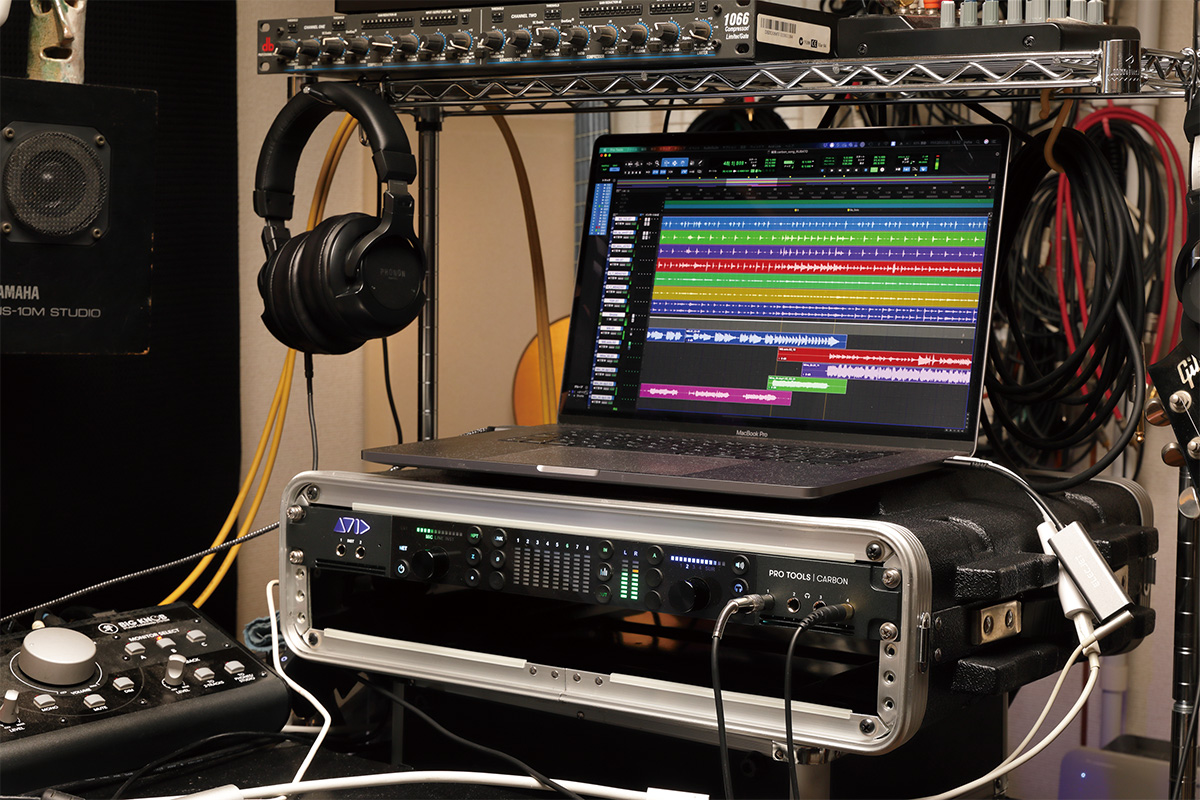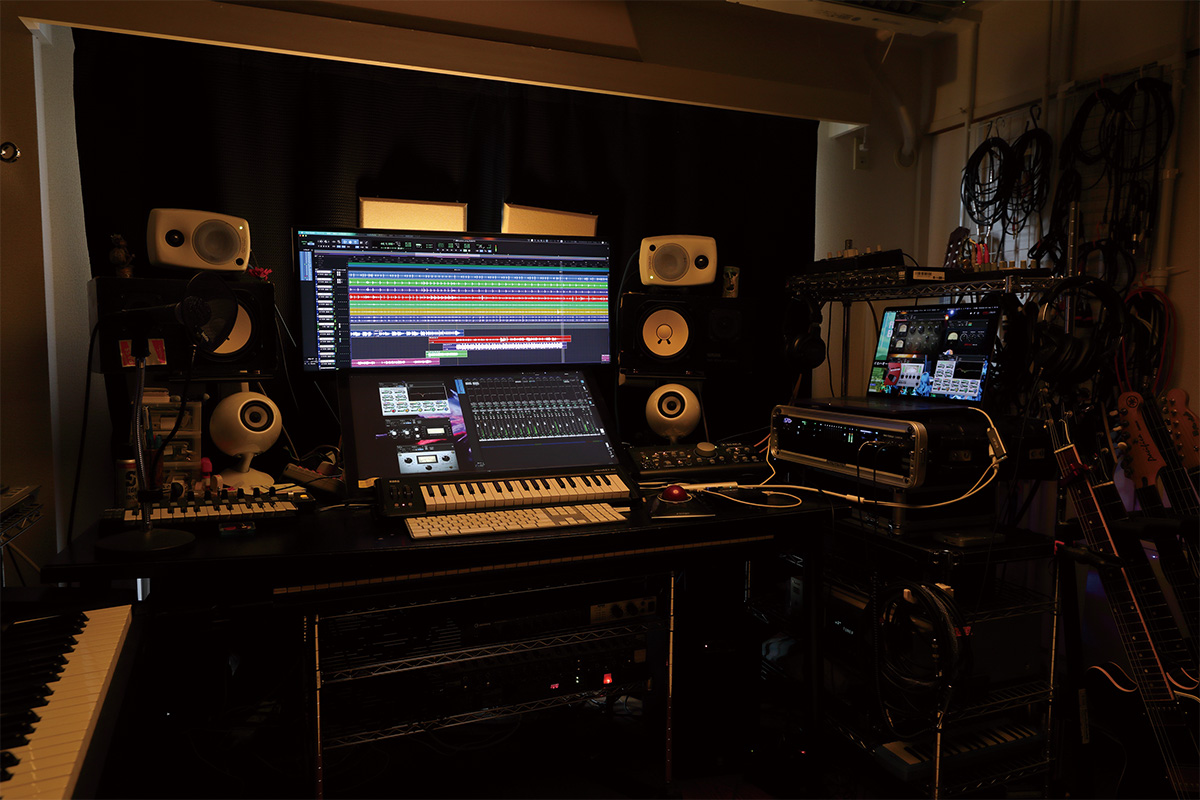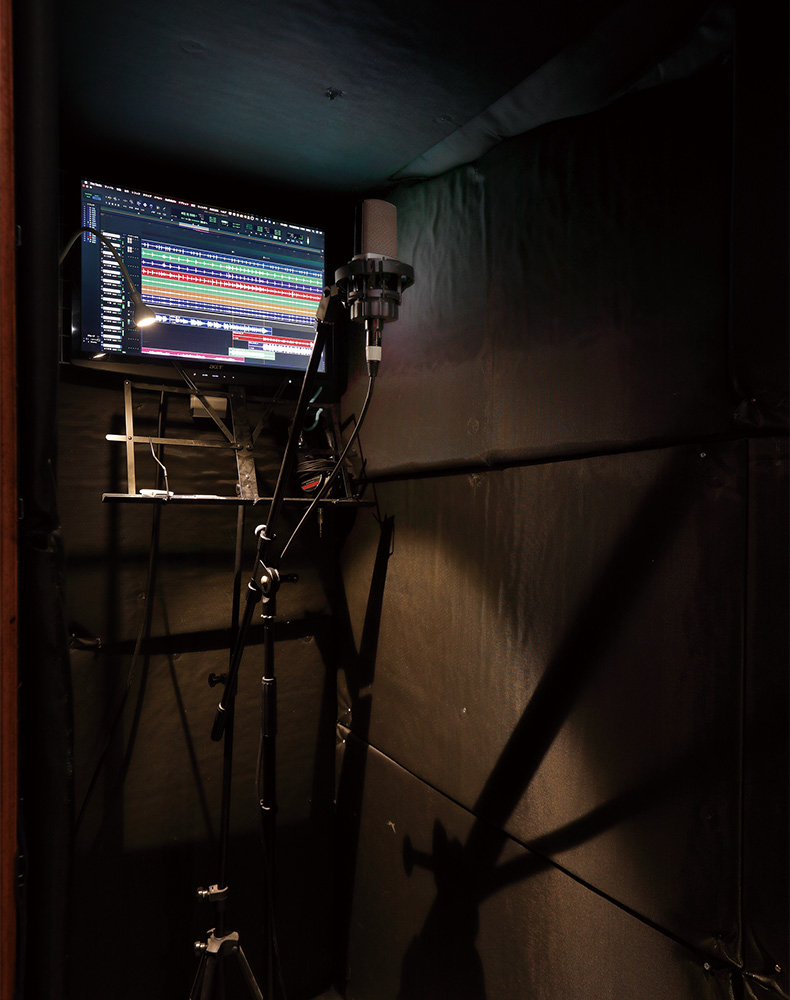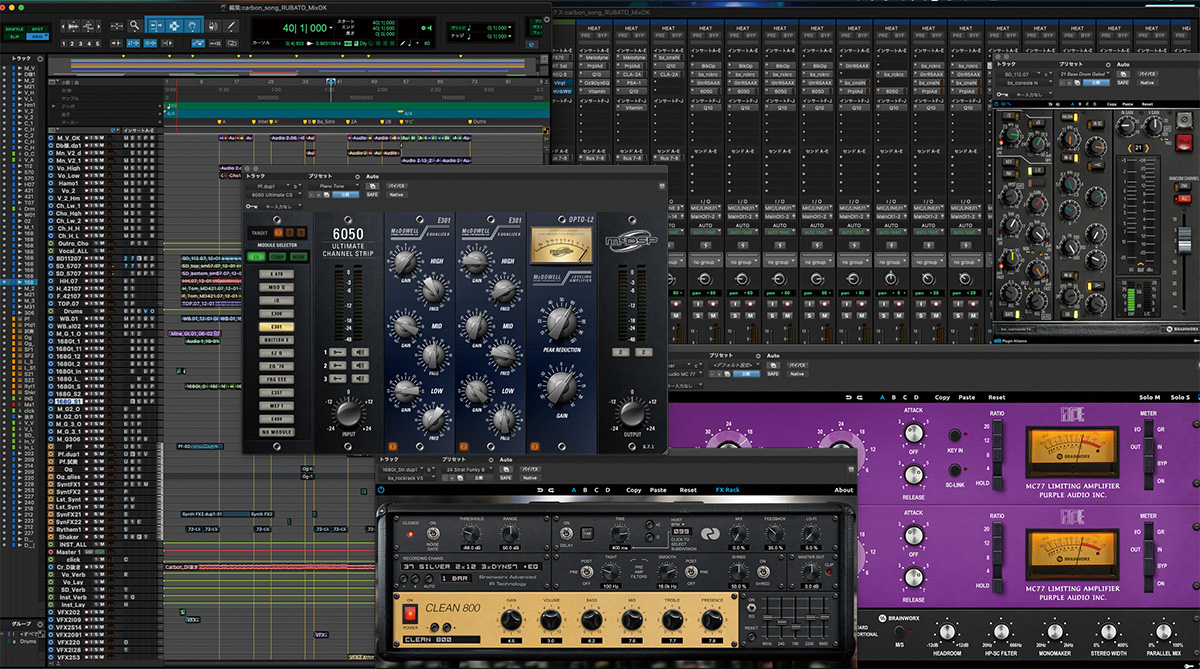
本稿はこちらの記事の英語版です。
I like that I can capture the sound I am looking for, as it is
From production in commercial studios to making recordings at home, Pro Tools|Carbon has proven itself useful wherever Pro Tools is being used to make music. Let's take a look at what this audio interface has to offer for creators recording from home. We spoke with composer and audio engineer Iroha about how he uses Pro Tools|Carbon when creating music.
Photo:Takashi Yashima Cooperation:TAC SYSTEM
A clear and well-defined sound
that stands out even through MP3 compression
Iroha has just finished using Pro Tools|Carbon to put together "Do not yet?" a song for his band Saraba Rubato, for which he performs vocals and guitar and also serves as their audio engineer. Their rock sound features jazzy keyboards and heavily-distorted guitar riffs. Iroha used Pro Tools|Carbon to record and mix vocals, guitar, wood bass, and drums. He describes how easy it was to set up monitoring for recording the band.
“For example, to record the drum, bass, and backing guitar together, you need quite a few output channels for monitoring. Up to now I've had to prepare a small mixer to use for monitoring. But since Pro Tools|Carbon has four independent headphone outputs, I can monitor and mix through Pro Tools. Now I don't have to go through the trouble of setting up a mixer, and it's great that all I have to do is hand headphones to each band member. Having a talkback function also appeals to me; it's like an audio interface with built-in monitor controller functionality.”
Iroha goes on to describe how he was surprised at the sound quality of Pro Tools|Carbon when he first listened to the monitor's audio.
"Everything else in my setup was the same, but I definitely felt a difference in clarity. I was especially impressed with the sound I got from the headphone output. There was hardly any distortion even as I increased the volume; it's a sound with plenty of room to move around in. I also wanted to ask my bandmates to check the audio and exported a 320 kbps MP3 file for them. They told me they can really feel the depth in the sound. I think the clarity of the audio really helps bring out this depth, to the point that it even came through after MP3 compression."

He also described his recording workflow for us. When recording the performance of Yanu, their drummer, he makes full use of the 8-channel mike preamp of Pro Tools|Carbon. For microphones, he says he uses an AKG D112 for the kick, Shure SM57s for the snare top and bottom, an AKG C451 for the hi-hat, Sennheiser MD421s for the high tom and floor tom, and C451s in an XY-type overhead setup.
"For recording, I'll also sometimes set up additional mics for the room, or for the kick, snare, or cymbals. In these cases I'll need more inputs, but since Pro Tools|Carbon has an ADAT interface, it's easy to connect an external mic preamp. I really like the expandability of the system."
When asked of his impression of the mic preamp built into Pro Tools|Carbon, Iroha describes it as having "wide gain range".
"For the kick, you have to put in a PAD or else it will quickly go over the peak gain. The mic preamp in Pro Tools|Carbon is a pad-less design but there is lots of room before the peak, making gain adjustments easy."」
For recording, guitarist Mine-Kun miked his guitar amp. Since bassist Senshuraku uses a wood bass, he plugged his piezo pickup directly into Pro Tools|Carbon. Likewise, Iroha also used direct input for recording his guitar performance.
"When I record guitar directly through line input, I set the impedance to 1MΩ. I used the same setting this time as well, but I think it would be interesting to try using the Variable Z function to play with the tone, like setting lower impedance to record the harder sound of a FENDER Stratocaster."

Plugins can be used without overloading the CPU,
even in the final stages of recording.
AAX DSP plugins are a function that have proved useful for guitar recording. Here, the BRAINWORX BX_Rockrack amp simulator was used to shape the sound, with real-time monitoring possible during recording.
"If you lower the buffer size in the DAW, you can record without feeling lag even when using native plugins. However, for someone like myself, who continues to compose during recording, often I want to add some guitar at the final stages. In such cases, when recording by adding a new amp simulator plugin, with so many tracks already in place the CPU may towards its limits, but if an AAX DSP plugin is used, that's no longer a problem."
Iroha also shared his thoughts on AAX DSP from the perspective of an engineer.
"When working in a studio environment like mine, you can't always count on having access to good outboard gear, and you end up relying on plugins. During recording, you want the performer's monitor to reflect the sound back to them faithfully, and that will require a plugin do it correctly. When you are recording several tracks at once, or using high bit rates and sampling rates, I think AAX DSP plugins are the answer since you can insert them during production without worry."


The perfect audio interface
for people recording at home studios and other locations
The song was mixed at Sound Inn Studios. During mixing, Iroha used several of the AAX plugins included with the system.
"I used plugins like the BF-2A and Purple Audio MC77 compressors, as well as EQ III. The EQ III plugin is included with Pro Tools, and I guess as a matter of personal taste I hadn't used it much until now, but it seems easier to use when matched with the sound quality provided by Pro Tools|Carbon. I also use BRAINWORX BX_Console N and MCDSP 6050 Ultimate Channel Strip HD as my channel strip plugins. BX_Console N has only a few presets, but I find it easy to use as a channel strip for creating music with a wide range in my own style. I've used the 6050 plugin a lot when working with drums. There are all kinds of modules and lots of presets. It can make a lot of distinctly different sounds and is good for hands-on music production."
The resulting song created using Pro Tools|Carbon, "Do not yet?"has been put up as a music video on YouTubend is also available on Avid's music distribution service AvidPlay. Please take a listen for yourself and experience with your own ears the sound of Pro Tools|Carbon. We wrapped things up by asking Iroha what he thinks the strengths of Pro Tools|Carbon are, based on this recording session.
"I really like that I can capture the sound I am looking for, as it is. For example, when I'm recording a cymbal, if I go through a typical audio interface the sound is quite crashing and jarring, and you often need to adjust the EQ and other settings to be able record a good sound. But, in Pro Tools|Carbon, such adjustments weren't necessary, as routing through the built-in mic preamp provided a good sound for recording. On top of that, you can monitor and edit using AAX DSP plugins, giving you functions found in a monitor controller or cue box as well. I think this is the perfect audio interface for people like me, who make music at their home studio and record in other places too."

Check out the music video and making-of video for "Do not yet?" as produced using Pro Tools|Carbon, online now!
Pro Tools|Carbon Product Information
Related Articles
This article is also available in Sound & Recording Magazine, Feb 2021.




